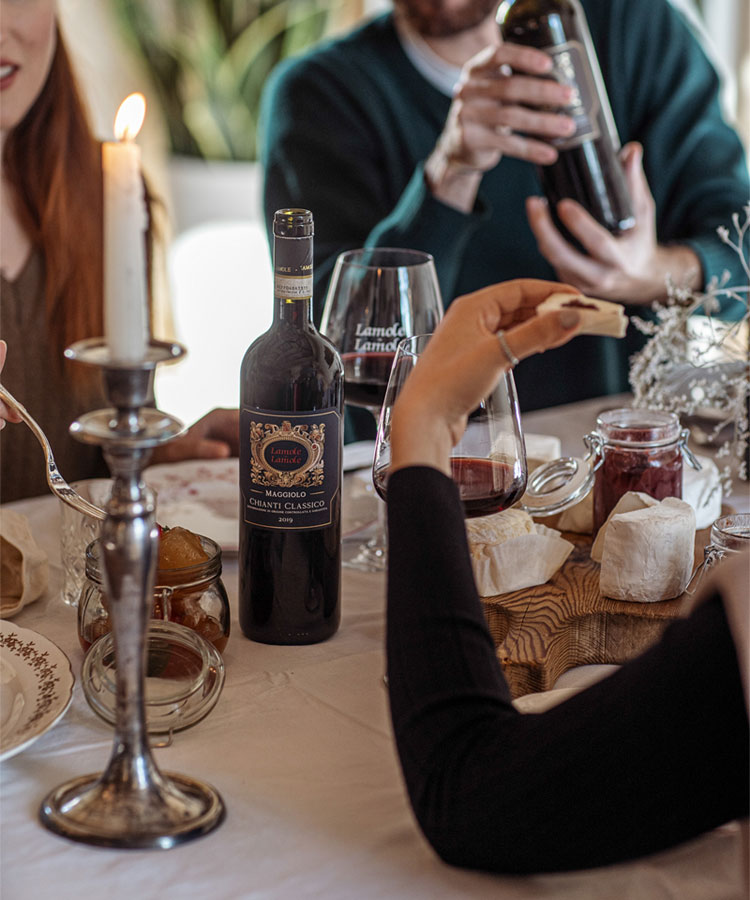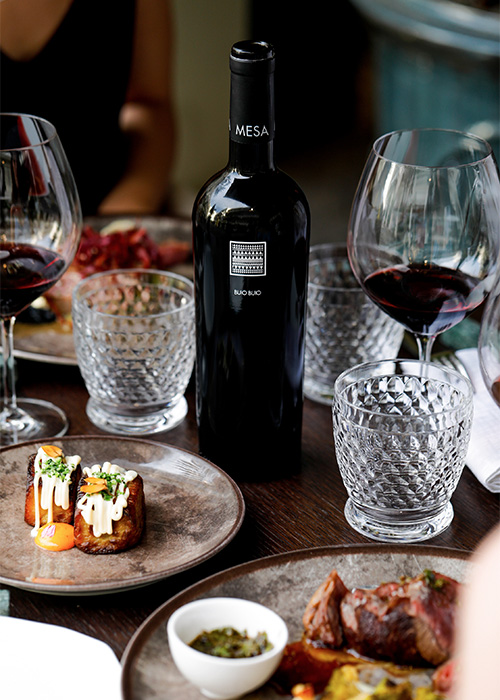
If sampling Italy’s winemaking regions firsthand is on your bucket list but you can’t swing the trip quite yet, take a tour of Italian vineyards from the comfort of your own home with these premium selections. A wide variety of soils and microclimates, winemaking techniques, and styles ensures that there’s a wine here to suit your palate — or perhaps even expand it.
We’ll salute to that.
Lamole di Lamole
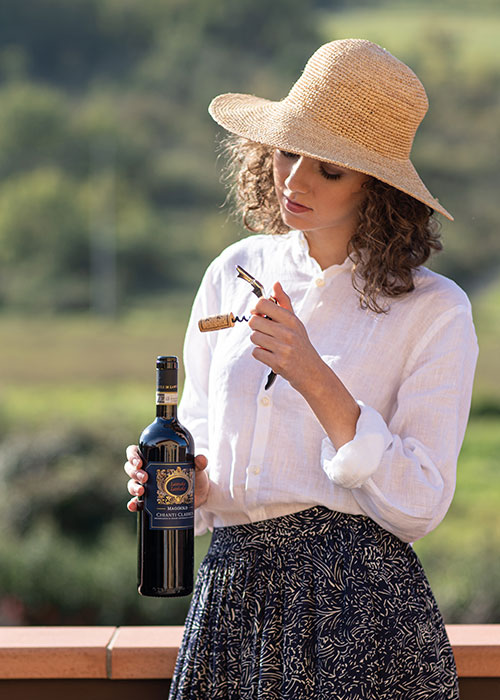 Lamole is an area in Italy known for its rigid landscape and harsh, jutting rocks. The name itself may have been derived from la mole, meaning mass or boulder, referencing the foundation upon which the original Castle di Lamole was built. The name may also have been derived from the ancient word lama, which translates to blade, a reference to the angularity of the surrounding hills. Either way, the area is tough to navigate but it has been a successful wine-growing area for centuries, in large part thanks to the people who tend to each vine, carefully hand-harvesting every grape. Vines are hardy — they love a challenge.
Lamole is an area in Italy known for its rigid landscape and harsh, jutting rocks. The name itself may have been derived from la mole, meaning mass or boulder, referencing the foundation upon which the original Castle di Lamole was built. The name may also have been derived from the ancient word lama, which translates to blade, a reference to the angularity of the surrounding hills. Either way, the area is tough to navigate but it has been a successful wine-growing area for centuries, in large part thanks to the people who tend to each vine, carefully hand-harvesting every grape. Vines are hardy — they love a challenge.
Lamole di Lamole Maggiolo
The Lamole di Lamole vineyard produces a full line of Chianti Classico wines to choose from — Normale, Riserva, and Gran Selezione. All grapes are grown at high elevations, and so require great attention to ripen correctly. Some of the vineyards are terraced and grape selection is methodical. Maggiolo Chianti Classico is a blend of four vineyard sites across the area, and three grapes — mostly consisting of Sangiovese, followed by Merlot and Cabernet Sauvignon. The varietals are fermented separately; Sangiovese is aged in large, neutral casks, and the Merlot and Cabernet Sauvignon in year-old barriques. The result is an earthy, fruity wine with subtle oak notes and a bright finish. It’s a perfect pairing with classic Italian dishes like eggplant parmesan and Neapolitan-style pizza, or other dishes like herb-crusted pork loin or chicken tikka masala.
Lamole di Lamole Lareale Riserva
The Lareale Chianti Classico Riserva is a blend of Sangiovese and Canaiolo, both of which are native Italian red grapes. The blend is then aged for 24 months in barrels and another three months in the bottles, creating complex dried fruit, spice, and leather aromas in the finished wine. A bold palate allows for exciting food pairings like mushroom risotto, creamy chicken tarragon, traditional moussaka, or any savory herbal and spiced dishes make for a great match.
Lastly, the Vigneto di Campolungo Chianti Classico Gran Selezione, which is primarily Sangiovese, brings rich and decadent flavors of crushed wild berries, coffee, nutmeg, and clove. Bold tannins are almost a prerequisite with these wines, and this one delivers, leaving your palate excited to drink more, though it may also continue to pay back dividends in the years to come as this wine ages beautifully. After fermentation, the wine is aged for 30 months in 30-hectoliter botti, traditional Italian casks, and three to six months in bottle before being judged for Gran Selezione. The process is lengthy but absolutely worth it.
Cantina Mesa
Mesa, or “table” in Sardinian, is a term commonly used to describe the physicality of a place — a mountain that seems nearly cut off at the top, a hill that got a little edgy as the elevation grew. In this instance, though, it is much more than that. The vineyard site at Cantina Mesa is meant to evoke the feelings of gathering around a table, nourishing your loved ones, and enjoying a meal together. The winery was founded in 2004 and strives to bring people together around the dinner table.
Cantina Mesa Buio Buio
Buio Buio (pronounced boo-yo boo-yo) is made from 100 percent old-vine Carignan, known as Carignano on Sardinia. Buio Buio, which means “darkness of darkness” in Italian, refers to both the dark, inky color of the wine as well as the dark cellar where it was aged to perfection.
The resulting wine blends ripe red fruit aromas and flavors that you might expect from Carignano, with savory notes, showcasing the freshness of Sardinia and giving a sense of place to the wine. Think crushed raspberries and cranberries rolling around with fresh ground pepper for just a touch of spice.
Buio Buio’s savory and fruity notes work wonders alongside roasted meats and rich herbs. Try it with braised lamb with rosemary and garlic, or coconut shrimp curry; though it is an inky red wine, Buio Buio is as versatile as it is delicious.
Masi
Masi was established by the Boscaini family in 1772. For over two centuries the family has passed knowledge down from one winemaking generation to the next, be it to family members or the vineyard’s esteemed winemakers. Nestled in the heart of Valpolicella, the Boscaini vignerons are experts in the appassimento technique — a classic method in the region used to naturally dry grapes by allowing air to “pass over” them for an extended period of time, concentrating their flavors, resulting in incredibly intense, robust, deeply flavored Amarone wines, beloved for their complexity.
Masi Campofiorin
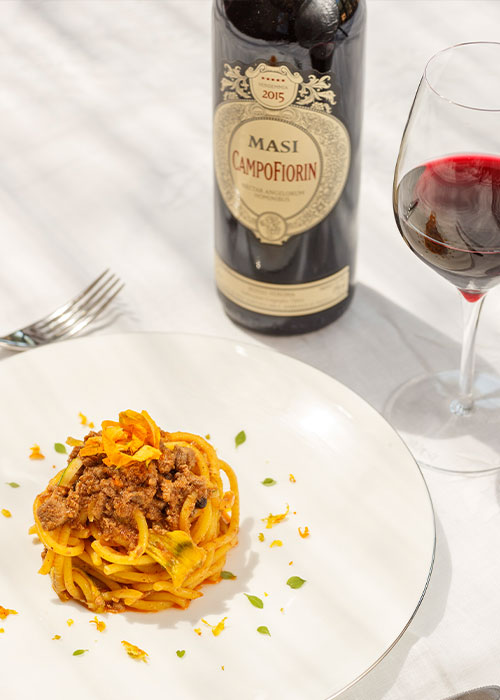 Campofiorin refers to the vineyard in the Marano Valley in Italy’s Veneto region near Verona. The grapes benefit from the temperature-regulating Lake Garda nearby. Here, the appassimento method is implemented, as a portion of semi-dried grapes is combined with fresh grape juice, which offers the best of both worlds — concentration and complexity with juicy fruit. The Campofiorin hits first with intense red cherry, raspberry, clove, and nutmeg aromas, with a dry, balanced palate and body. Velvety tannins round this wine out, making it a perfect and intense pairing for equally rich foods. Next time you cook up a bolognese, grilled pork chops, or anything with umami flavors, be sure a bottle of Campofiorin is within reach.
Campofiorin refers to the vineyard in the Marano Valley in Italy’s Veneto region near Verona. The grapes benefit from the temperature-regulating Lake Garda nearby. Here, the appassimento method is implemented, as a portion of semi-dried grapes is combined with fresh grape juice, which offers the best of both worlds — concentration and complexity with juicy fruit. The Campofiorin hits first with intense red cherry, raspberry, clove, and nutmeg aromas, with a dry, balanced palate and body. Velvety tannins round this wine out, making it a perfect and intense pairing for equally rich foods. Next time you cook up a bolognese, grilled pork chops, or anything with umami flavors, be sure a bottle of Campofiorin is within reach.
Masi Costasera
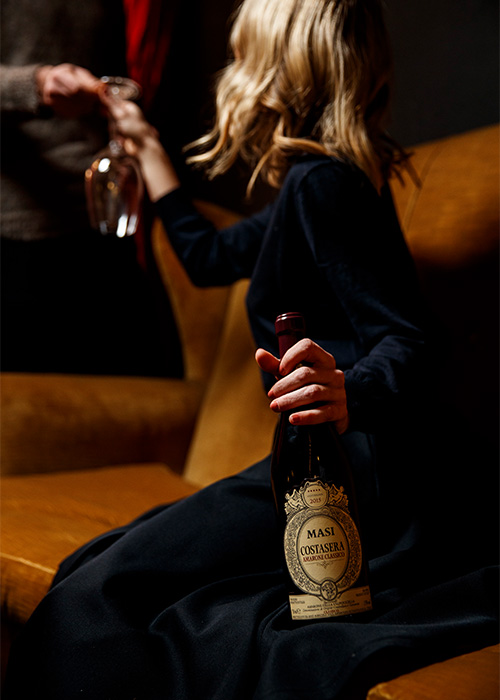 Costasera represents the best of the five famous valleys within Valpolicella Classica, laid out on bamboo drying racks following the ancient appassimento method for months. After being vinified, they age for 28 to 30 months in Slavonian and French barrels, resulting in a beautifully rounded, complex, and concentrated elegant wine. Known for its intensity, this Amarone pairs well with dishes that bring similar richness — hearty stews, cheeses, roasted duck with figs, and all the beautiful cuts of meat that overpower lighter reds will fit right at home with Masi Costasera.
Costasera represents the best of the five famous valleys within Valpolicella Classica, laid out on bamboo drying racks following the ancient appassimento method for months. After being vinified, they age for 28 to 30 months in Slavonian and French barrels, resulting in a beautifully rounded, complex, and concentrated elegant wine. Known for its intensity, this Amarone pairs well with dishes that bring similar richness — hearty stews, cheeses, roasted duck with figs, and all the beautiful cuts of meat that overpower lighter reds will fit right at home with Masi Costasera.
These wines continue to find exciting ways to bring traditional Italian winemaking to the market through thoughtful winemaking processes and expert grape selection. Each sip is like a stop on a tour of the Italian countryside, one that is perfect no matter what the weather is like.
This article is sponsored by Santa Margherita USA.
